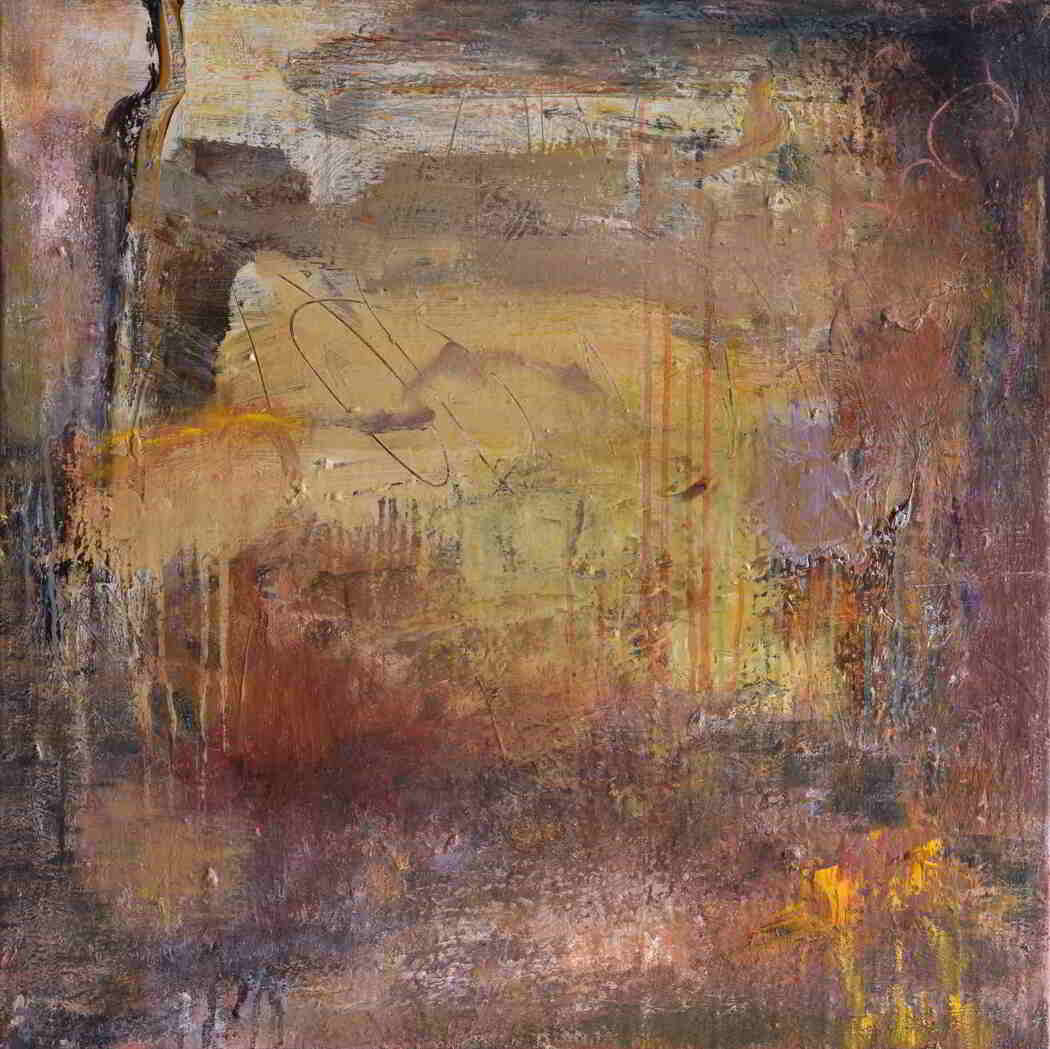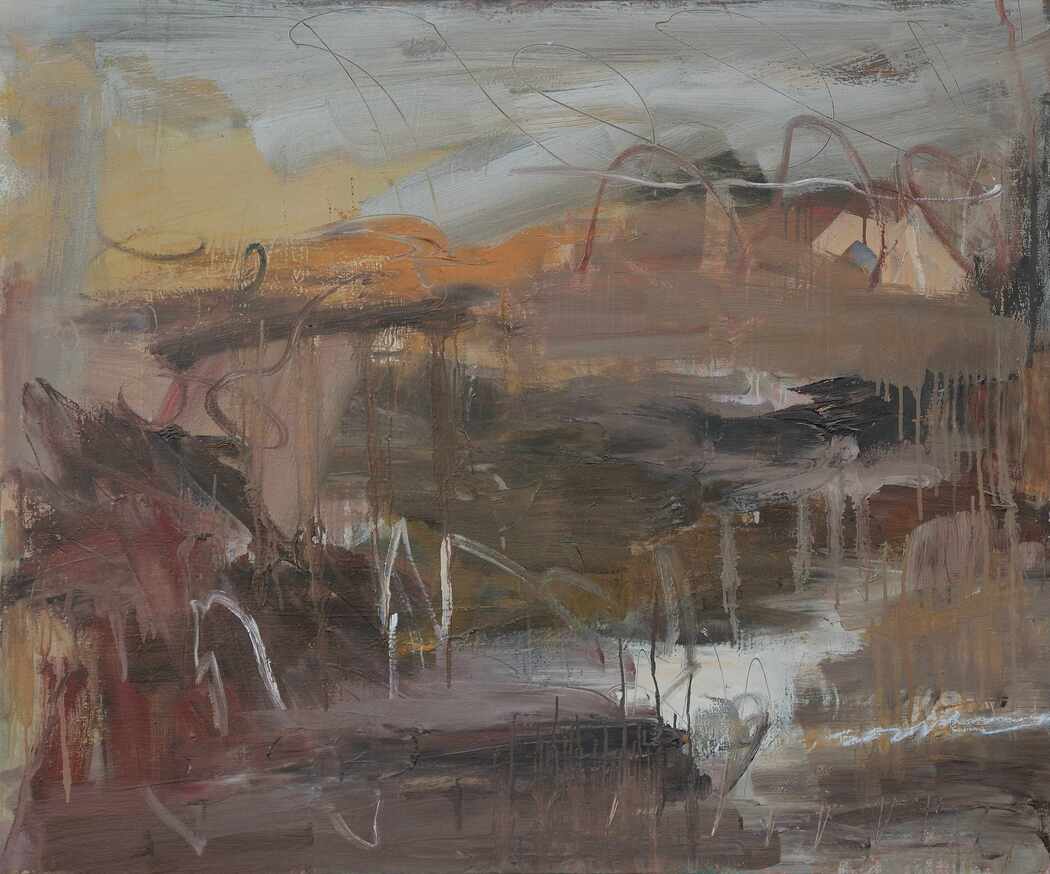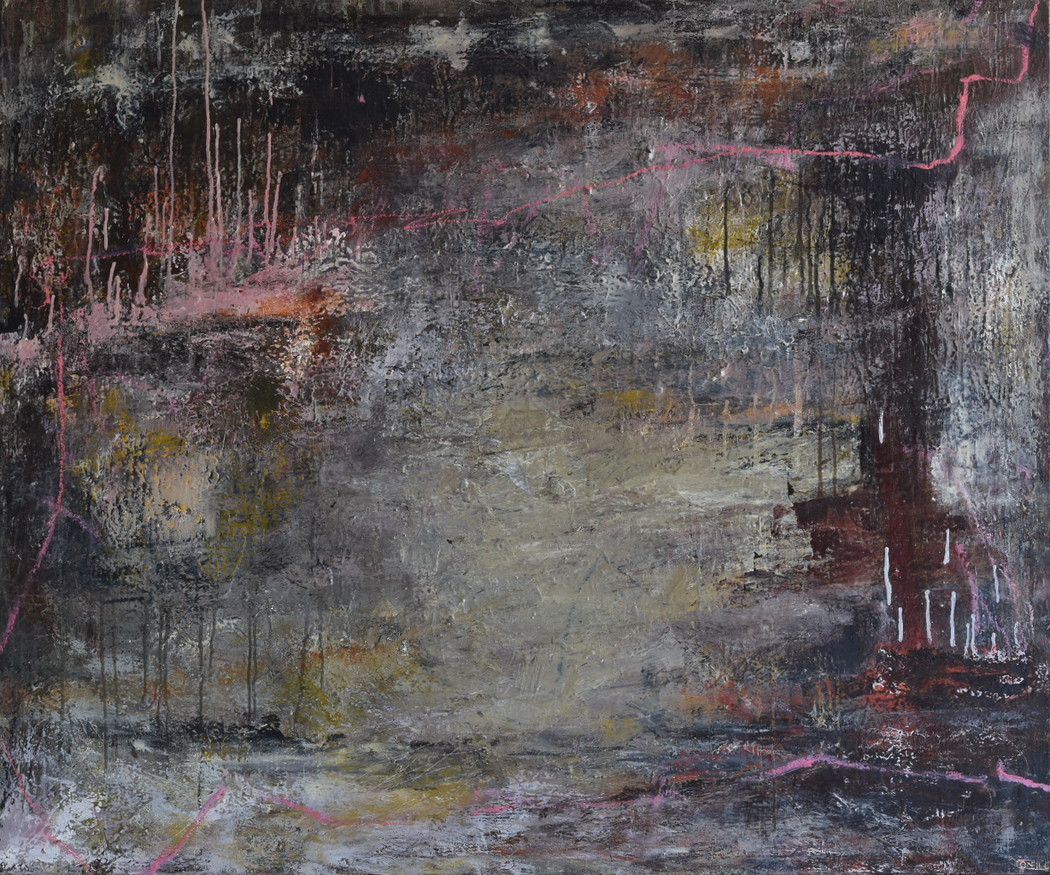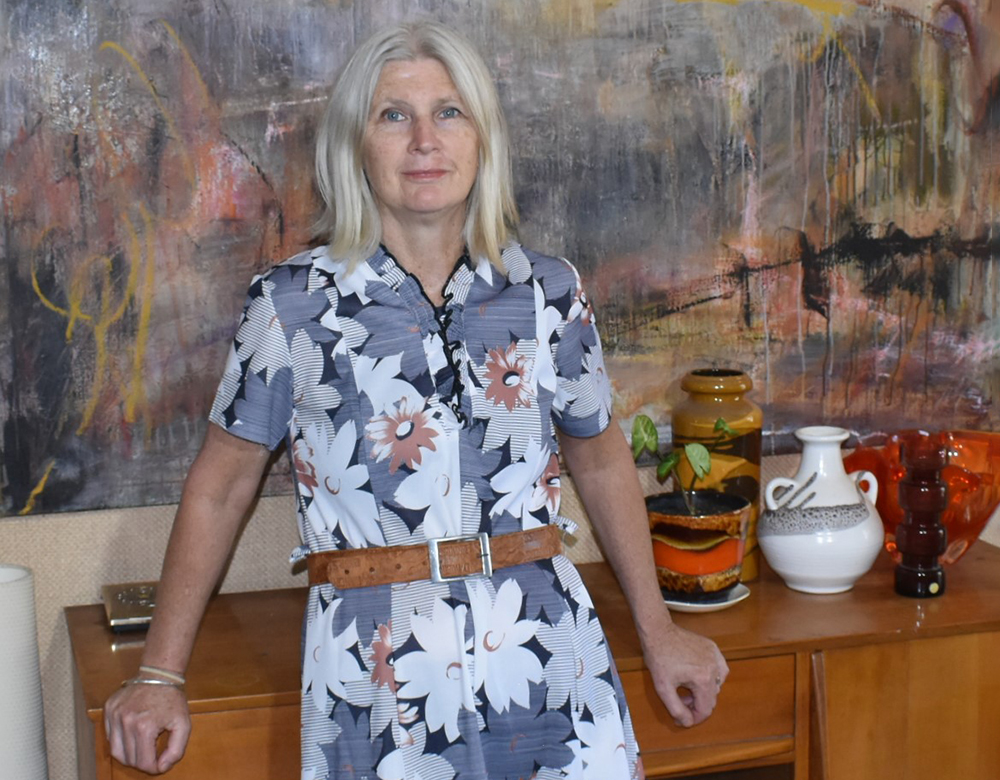Carolyn O’Neill
Your work is deeply influenced by early abstract expressionists. What drew you to the movement initially?
Whilst studying visual art at Tafe (Technical and Further Education) in Western Australia we were encouraged to keep a visual art journal. As I began to search for inspiration, the notion of a painting not having to be representational had a profound effect on me. In these genres of works the emotional application of paint and mixed media becomes essential to the composition. The rawness and sense of freedom in not being constrained by representation, but rather a visual dialogue is what first drew me to abstract expressionism.
This became a catalyst and directed me to explore the works and impact of the early abstract expressionists from the New York art school. Thus began the search of imagery of works by Willem De Kooning, Helen Frankenthaller and Jackson Pollock, to name a few. It was their exceptional use of bold colour, composition and expressiveness that I yearned to capture in my work.
Can you describe how the landscapes of the Flinders Ranges are currently influencing your palette and composition?
Since moving to this region in South Australia in recent years the Flinders Ranges have become my muse. This unique arid landscape is ever changing in hue and form. The ranges dominate the skyline amidst a sea of cascading salt bushes. However, it is not the literal landscape that I seek to replicate, but to distil the very essence. The palette is muted and earthy. It is rich with subtle tones of violet and hues of reddish-brown ochre.
The compositions vaguely resemble landscapes however I feel that it is more about the mark making that truly brings these works to life. Scratching, scraping and drips of paint mixed with medium evoke the rich tapestry of this vast and dense terrain.
 Carolyn O’Neill | Golden glow | 2024
Carolyn O’Neill | Golden glow | 2024
What role does intuition play in your painting process?
Intuition is my guide. I first realised this when I struggled to draw anything in great detail, so I just decided to improvise. One of my Tafe lecturers told me that I relied ‘on a wing and a prayer.’
This became my strength and she just let me do my thing and encouraged me to pursue abstract expressionism. Each mark informs the next, it is an unplanned response. I navigate without a map and value the process over the end product.
You describe your process as involving both construction and deconstruction. Can you expand on how this editing shapes your final pieces?
The beginning stages of constructing a painting involves an initial stream of consciousness mark making such as gestural brush strokes gradually building up into layers. At this stage I am just laying down paint and not yet considering the overall composition. This is quite liberating where I seek to trust myself to let go without restraint or expectation.
In order for clarity of composition to be achieved the painting needs to be tethered or deconstructed. Some marks will be retained and some will be veiled with diluted paint so that the visual history is still evident. Other areas might be strategically covered; it is back and forth process of flux. It is vital that I don’t become too attached or ‘precious’ about these marks as this process can be quite brutal. If I can improve the overall work by being ruthless then it is worth the sacrifice.
An open balanced composition that gives room for the eyes to wander and find a place to rest is generally my goal.
 Carolyn O’Neill | Distant sun | 2022
Carolyn O’Neill | Distant sun | 2022
How do you approach the balance between control and spontaneity in your work?
Spontaneity is my starting point, a warm up to get my creative energy flowing. It allows me the freedom to make a mess without editing, without restraint. For instance, ‘what if I use a different colour? Or splash some paint over this area?’ So, I just go ahead and do what comes to mind. Then I allow the work rest sometimes flat or vertical. When I revisit the piece, I look at what areas are working and what are not.
This is when the overall composition is considered and there is a need to control the process. It is time intensive and involves many decisions in an effort to unify the work. Every mark becomes intentional; it must somehow connect or weave a thread through the work in some way. Contrast is also an important consideration which gives the work visual weight and balance.
What emotions or ideas are you exploring in your current work?
My current work seeks to subconsciously evoke a sense of peace and rest. I channel these emotions instinctively through the way I apply paint and use materials. From bold to gestural strokes contrasted with areas of negative space.
The general idea that I am currently exploring is the orientation of my pieces from landscape to portrait format. I do find the composition more challenging since the territory is more linear and the length of marks tend to differ greatly. Tools for mark making are in constant demand, discovering unique marks that add more depth to the work.
 Carolyn O’Neill | Vast open ranges | 2024
Carolyn O’Neill | Vast open ranges | 2024
How does living in Port Pirie affect your artistic rhythm and focus?
Port Pirie is a unique mining town blessed with the back drop of the Flinders Ranges. The local lead smelter is anchored by towering industrial structures that extend along a small port inlet. The quiet relaxed pace of a rural town suits and grounds me. I feel quite focused in my home studio which looks out to my bustling garden filled with an array of cacti and fruit trees. Port Pirie has a regional art gallery which I have exhibited at on several occasions.


Leave a Reply